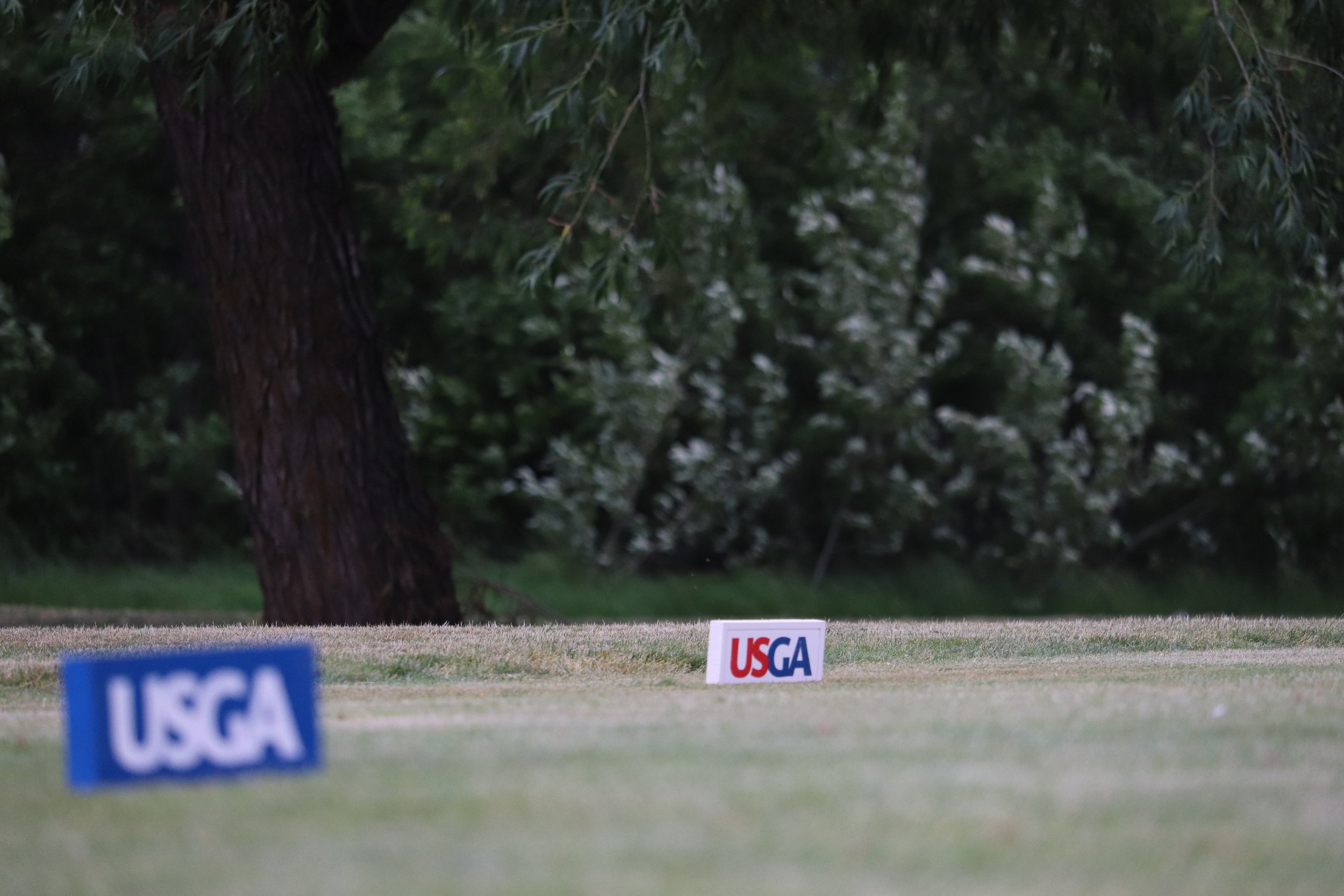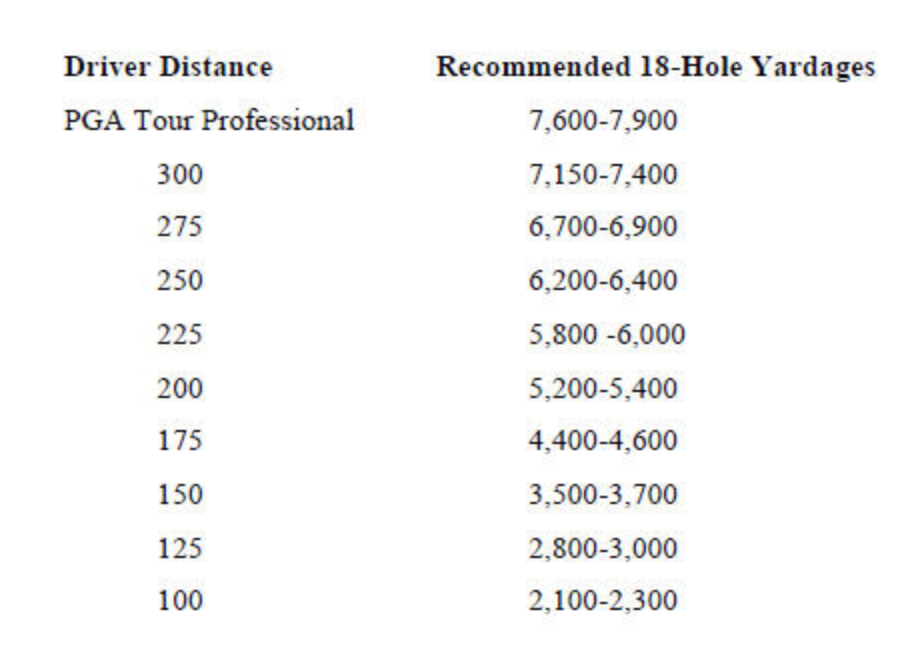Put Me Down For a 5: What we talk about when we talk about tee boxes
A case for reconsidering who plays from where, and why.
Written by Shane René, USGA P.J. Boatwright Media and Communications Intern
I spend an outrageous amount of my time thinking about golf. Whenever I’m not getting lost in the melodrama of PGA Tour vs. LIV Golf, I spend a lot of that time thinking about recreational golf — the game reserved for people who can’t feed their family with a good week of ball-striking and a hot putter.
Recreational golf is, unfortunately, plagued by a number of barriers to entry. A starter set of clubs and a bag will cost a few hundred dollars at minimum; add golf balls, shoes, gloves, clothes and things can get pricey before you’ve even paid a greens fee. It also takes a lot of time, and finding five free hours amidst the chaos of life isn’t always easy. But even if we put the financial burden aside, and assume time is for killing, golf can seem like an impossibly difficult game to a novice player.
Of course, the unrelenting difficulty of golf is what makes it so enchanting. It is maddening and rewarding in decidedly unequal parts, and there is something beautiful about the pursuit of rare satisfaction amidst hours of getting humbled by grass. But that’s not a very compelling pitch. If we want recreational golf to thrive, introduce new people to the game and keep our facilities flush with cash, we have to make that difficulty more accessible. We have to create a culture within the game that encourages success and enjoyment above all else. I’ve come to believe that this problem has a natural starting point, and the way we talk about and utilize tee boxes is in desperate need of an overhaul.
The first time I ever thought critically about tee boxes was in middle school. My friends and I were out at Shadow Valley Golf Course, holed up in the pro shop waiting to make the turn.
“Let’s play the back nine from the red tees,” I said, hoping to take a few birdies and some confidence home with me after a miserable front nine.
“Did you bring your purse for the ladies’ tees?” my friend chirped back.
“The forward tees,” interjected a woman whom neither of us knew. “Not all women play from the forward tee.” And she was right — tees have colors and yardages, not ages or genders.
As I’ve gotten older, playing competitive golf through high school and into college, I think back on that interaction quite often. I now know and have watched many women play from a wide range of tees, moving further back as they improve, and then forward as they wish. The IGA’s own Lexie VanAntwerp, a skilled player and former club professional, says she almost exclusively plays from the forward tee when she has the choice.
“It’s still hard, it’s just more fun.” VanAntwerp said. “There’s no reason to grind it out hitting 3-woods or hybrids into par-4s. I have more fun with my 9-iron and wedges.”
Men, I've noticed, are much less likely to do the same. Stubborn and proud, they tend to chain themselves to the “mens’ tee,” ensuring that the first time they break 80 is “legit.” And when they dribble their tee shot short of the “ladies' tees,” the self-imposed emasculation shows no mercy. Such a perspective is unhelpful to men, disrespectful to women, and disruptive to anyone trying to have a good time.
This tee-box ethic creates two primary issues. First, it ties tee boxes to identity (age and gender), which is an incredibly limiting, if not archaic, way to determine how someone should engage with a round of golf. If you look carefully at a scorecard, you’re unlikely to find tee boxes listed with any association to age or gender. What you will see are course ratings for men and for women (usually for every tee box), a women’s par, and women’s stroke index. Each of those metrics are divorced from how the game is actively played and are only relevant to handicapping, which separates male and female players to account for significant disparities in average distance. But tee boxes themselves can, do, and should exist independent of age and gender, open to anybody who wishes to play them.
The second issue is one of pride and legitimacy. Perhaps the hardest rounds of golf to watch are the ones in which someone trying to shoot in the 70s for the first time makes a double on the last hole to shoot 80 or 81. Those are the rounds that expose golfers to the game’s ruthlessly thin margins and produce the scar tissue that can make this game so discouraging. My suggestion to anyone in this situation, regardless of the target score, is to move up a box and disabuse yourself of the notion that your score is any less legitimate because of the yardage. As long as you leave the mulligans and licorice rope at home, 79 will always be 79.
This argument may sound familiar. The USGA and the PGA of America have partnered up for “Tee-it-Forward” campaigns over the last handful of years based on Adams Golf founder Barney Adams’ belief that many golfers were robbing themselves of a good time by teeing it up much too far from the hole. Tee-it-forward campaigns often come with a chart connecting average driving distance to an ideal playing length to guide golfers to the most suitable tee box. Alternatively, a 2020 Golf.com article proposed taking your average 5-iron distance and multiplying it by 36 to produce an ideal playing length (example: 150 yard 5-iron x 36 = 5,400-yard ideal course length). A USGA survey following the “Tee-it-Forward" campaign found that moving up a tee box or two was overwhelmingly positive. More than 50% of players reported faster rounds and an increased desire to play again, 85% said they had more fun, and more than 90% of players said they would continue to “Tee-it-Forward."
(Credit: United States Golf Association)
These guidelines have great utility for any player, and it’s fair to place my argument in the broader “Tee-it-Forward" bucket, but deciding what tee you should play doesn’t need to be so mathematically rigid. Consider your distance and consider your skill level, but always prioritize the reason you’re out there: to enjoy yourself.
Whether you’re a scratch player or just picked up a club, try playing from the forward tee. Set a target number, perhaps a score you’d only dream of shooting, and go get it. Then move back a box and try it again, moving back each time you hit your target. Skilled players will learn how to score, and beginners can make things easier on themselves.
You can also build your own set up, picking your tee box on each hole based on your own criteria for what makes a fun golf hole. Want that short par-four to be drivable? Move up a box. Did you hit a wedge into the last two par-3s? Mix things up and move it back on the next one.
If you’re worried about how playing from different tees might influence your handicap, there is no cause for concern. Since the adoption of the World Handicap System, your index is now portable, adjusting with the course rating for each tee box so your sandy buddy won’t get sandier if you drag him to the forward tees with you. And if you take my suggestion to play from an unrated collection of tees, the USGA has a process for posting those scores. (You can always contact your club pro or the IGA with any handicap questions).
So, next time you go play, experiment with the tees you play from. See your home course through a different lens, shoot lower scores, and enjoy the game. Life is too short to lay up on par-4s.


